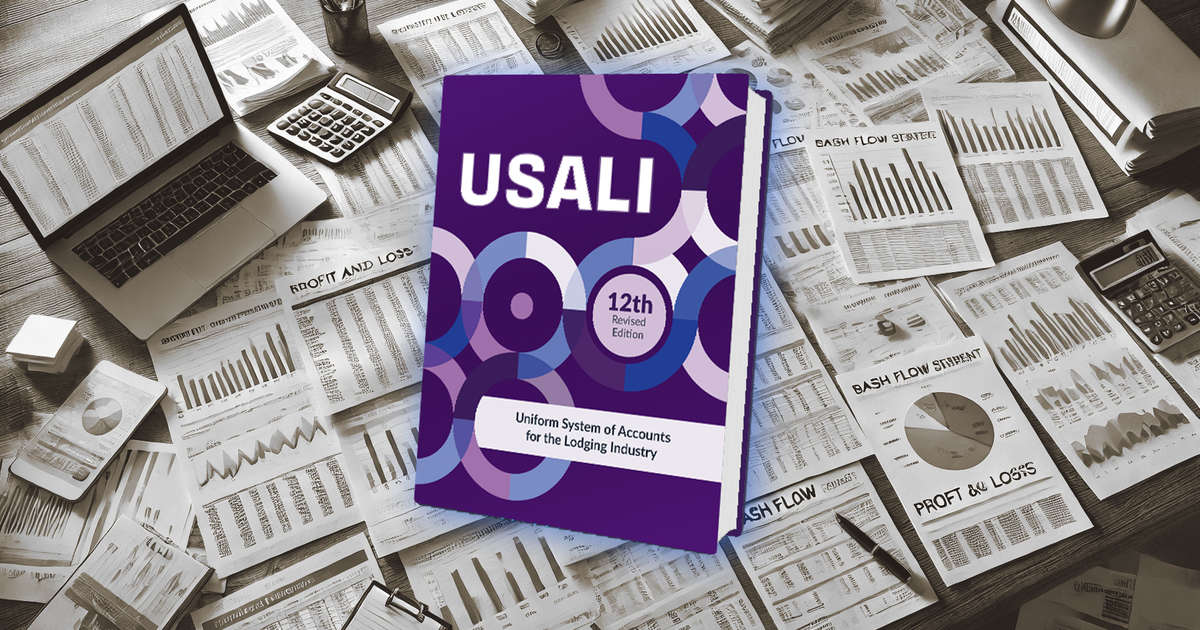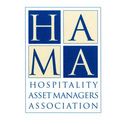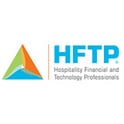
 The USALI 12th edition is finally out. Why is this good news and why it is never too late to adopt it. — Photo by Created by HN with DALL·E
The USALI 12th edition is finally out. Why is this good news and why it is never too late to adopt it. — Photo by Created by HN with DALL·E
On February 2025 HFTP finally launched the long-awaited 12th edition of the Uniform System of Accounts for the Lodging Industry (USALI), the standardized financial reporting system the hospitality industry has relied on for decades. The release of the 12th Revised Edition marks a significant milestone, introducing enhancements that align with contemporary industry practices and address emerging global challenges long ignored by the industry. What are the changes and how are these going to impact the hotel real estate business?
What is USALI?
The USALI is a standardized accounting framework designed for the hospitality industry, particularly hotels. First introduced by the American Hotel & Lodging Association (AHLA) in 1926, the purpose of the USALI was (and still is) to provide a consistent method for hotels to track financial performance, enabling comparison across different properties and regions. The system has evolved over time to reflect changes in the industry, incorporating new revenue streams and accounting practices and it has undergone several revisions to address the growing complexities of the hospitality sector. From costs like Postage, Broadcasting and switchboard payroll included in the 4th edition (dated 1946) to digital marketing, social media marketing and pet fees in the most recent edition.
Why USALI matters?
With the main principle being tracking and benchmarking financial performance across different hotel types and different geographies, USALI has quickly become the “language” spoken between hotel operators and hotel owners: most of the HMAs (Hotel Management Agreements – the contract between operators and owners) have a clause stipulating the use of USALI as the only accounting and reporting methodology. With the exponential growth of HMAs versus other contracts (i.e. leases) the relevance of USALI has become of a global reach, becoming the ultimate accounting guide for any hotel worldwide.
What are the top 5 major changes?
Across the book several additions and clarifications have been included to make sure users are able to better account for costs (especially in marketing, social media, etc.) or to better identify if F&B outlets can be considered in the revenues of F&B outlets or Other Department; but, together with those, the major changes can be summarized as:
- Loyalty Program: This is answering owners’ request to truly understand how much loyalty programs are really costing. With intricated operator-specific mechanisms based on point earning/redemption, occupancy thresholds, etc. understanding the true costs of loyalty programs has always been a challenge (sometimes even compared to a mystery) for most hotel owners. With these new dedicated lines, this mystery will finally be resolved, and costs will become much clearer.
Implications: this will bring to surface if a loyalty program is beneficial for the hotel in terms of business generation or if it is increasing operational expenses, exposing those programs which are not fully working or those hotels that are not benefitting from it (imagine a hotel where people go to “burn” their points rather than “earning” them). I am expecting several hotel owners to re-discuss the implications of opting in (or out) of loyalty programs once these lines will provide unequivocal figures. - Executive Lounge: Similarly to Loyalty Program, it was really difficult to understand the real cost of the corporate-loved Club Lounges as these costs was “merged” with other cost in one single line. The new USALI now requires Lounge to have a full and separate schedule, allowing hotel owners (and asset managers) to dig into details and understand the real cost of this operation.
Implications: with the ability to evaluate if a club lounge brings benefits to the financial performance or not, I would expect sensible owners to reconsider/rescale the operations and (eventually) reduced the benefits of Lounges to keep these costs at bay. - Annual Schedule of Mandatory Brand and Operator Costs: through the course of years, operators have included more and more additional (sometimes hidden) fees, in the operational costs of the hotel. Fees like training, recruiting, specific operator-proprietary system usage are charged to each hotel worldwide and “get lost” in the Profit & Loss statement like drops in the ocean. With the implementation of the 12th edition, operators will have to report (on a yearly basis) all the fees charged to the hotel. I have seen some operator charging the hotel 20 US$ each time a staff member wants to recover a lost system password so you can imagine how quickly the amount of fees can escalate throughout one year.
Implications: this change is a massive increase in transparency and will allow owners / asset manager to better scrutiny the billing and the real support of operators. I am also assuming operators will now try to reduce these fees to prevent any potential image loss, at least with major hotel owners / funds. - Schedule on Energy, Water, and Waste (EWW): this schedule consolidates expenses related to energy, water, sewer, waste, and contract services. Previous schedule did not include the entire waste costs (which was part of maintenance) but also did not detail the different types of electricity (i.e. fuels, renewable, vehicle, etc.). From a profit calculation this change does not have any impact but from a sustainability point of view is a game-changer as it allows USALI to introduce a new plethora of additional sustainability metrics to help operators and owners understand, monitor (and hopefully) reduce the environmental impacts of operations.
Implications: the impact of this change will differ extensively depending on the region. In countries where ESG is particularly strong, it will serve the purpose to benefit from financial incentives made available by government and even (in some cases) green financing. With these metrics available, it will be easier to consolidate in the Corporate and Social Responsibility annual reports to shareholders for both operators and owning companies aligning interests in reducing carbon footprint. - Inclusion of All-Inclusive Hotel Reporting Guidelines: the 12th edition also expands its area of influence by including guidelines for all-inclusive resorts / properties where business dynamics are slightly different than traditional hotels. This inclusion ensures that all-inclusive properties can accurately reflect their financial performance in line with industry standards.
Conclusion
The release of the USALI 12th Revised Edition represents a significant advancement in the standardization of financial reporting within the hospitality industry globally. By incorporating contemporary practices, enhancing transparency, and addressing emerging challenges, the 12th edition equips hotel operators and owners/asset managers with the tools necessary for effective management and strategic decision-making. As the industry continues to evolve, the 12th edition serves as a vital resource for aligning financial reporting with current and future industry needs. A well-known Chinese proverb says The best time to plant a tree was 20 years ago. The next best time is today. The same applies to use USALI. It is never too late to have your hotel joining the widest reporting methodology in the world.
 — Source: HFTP
— Source: HFTP
Giuliano Gasparini
HOSPITALITY ASSET MANAGERS ASSOCIATION MEA
Hospitality Asset Managers Association (HAMA) MEA
Finance & Accounting 





